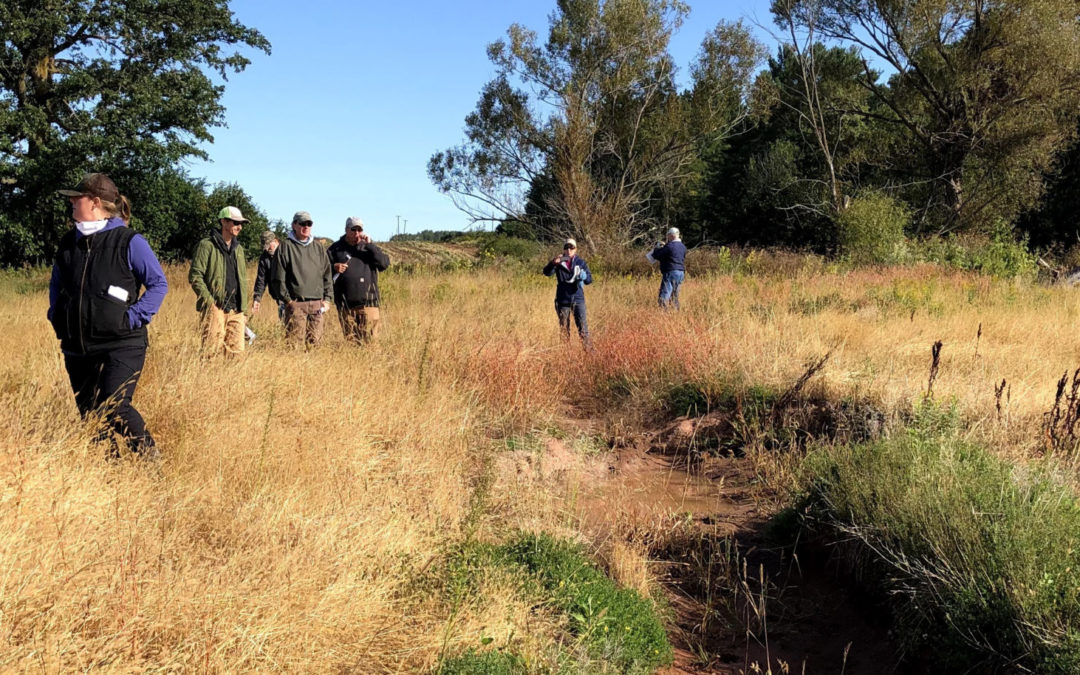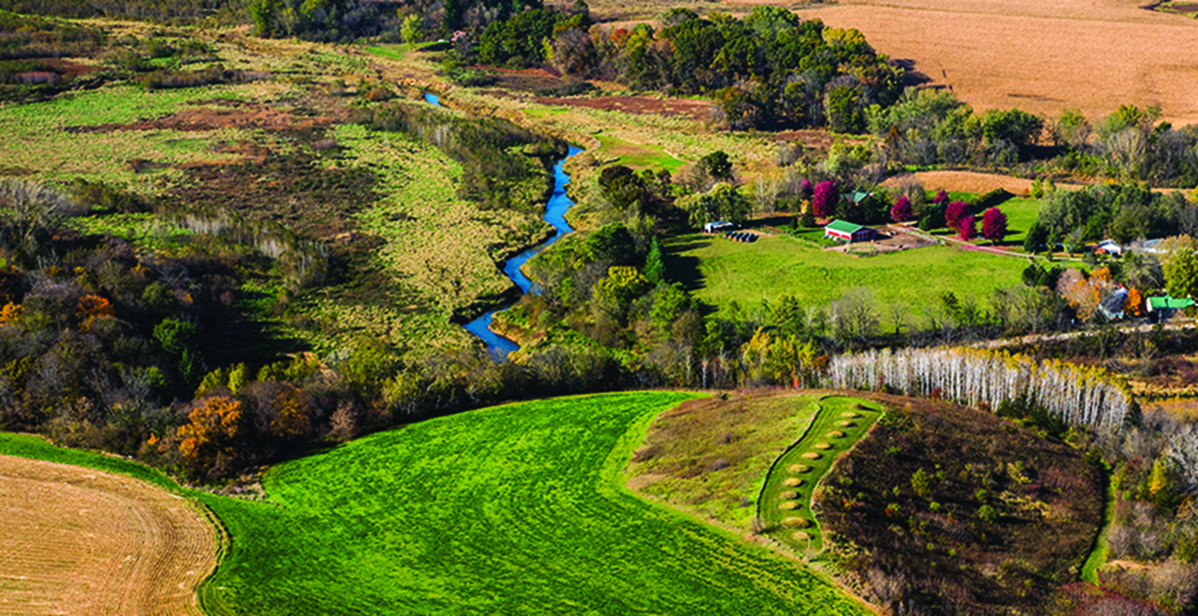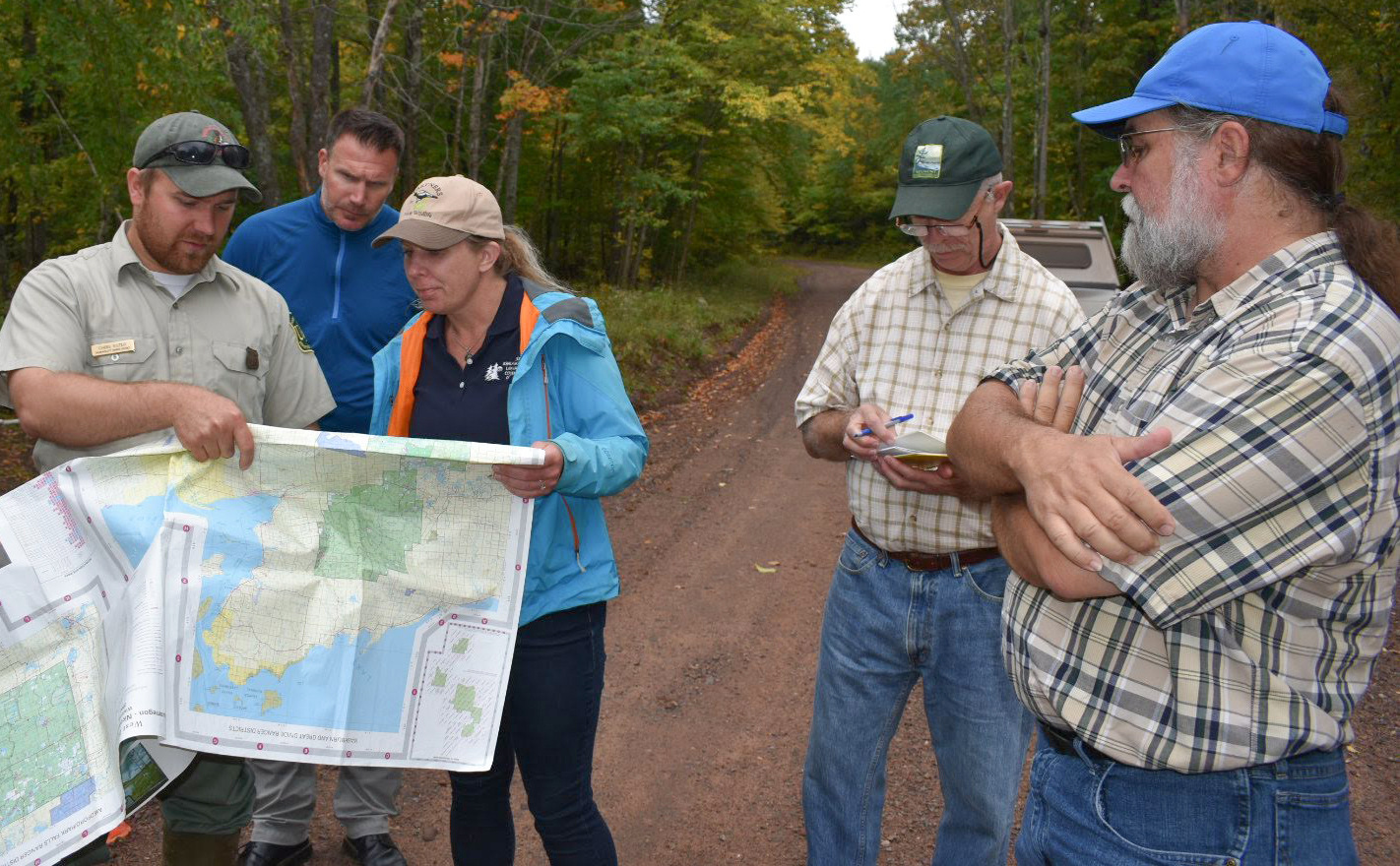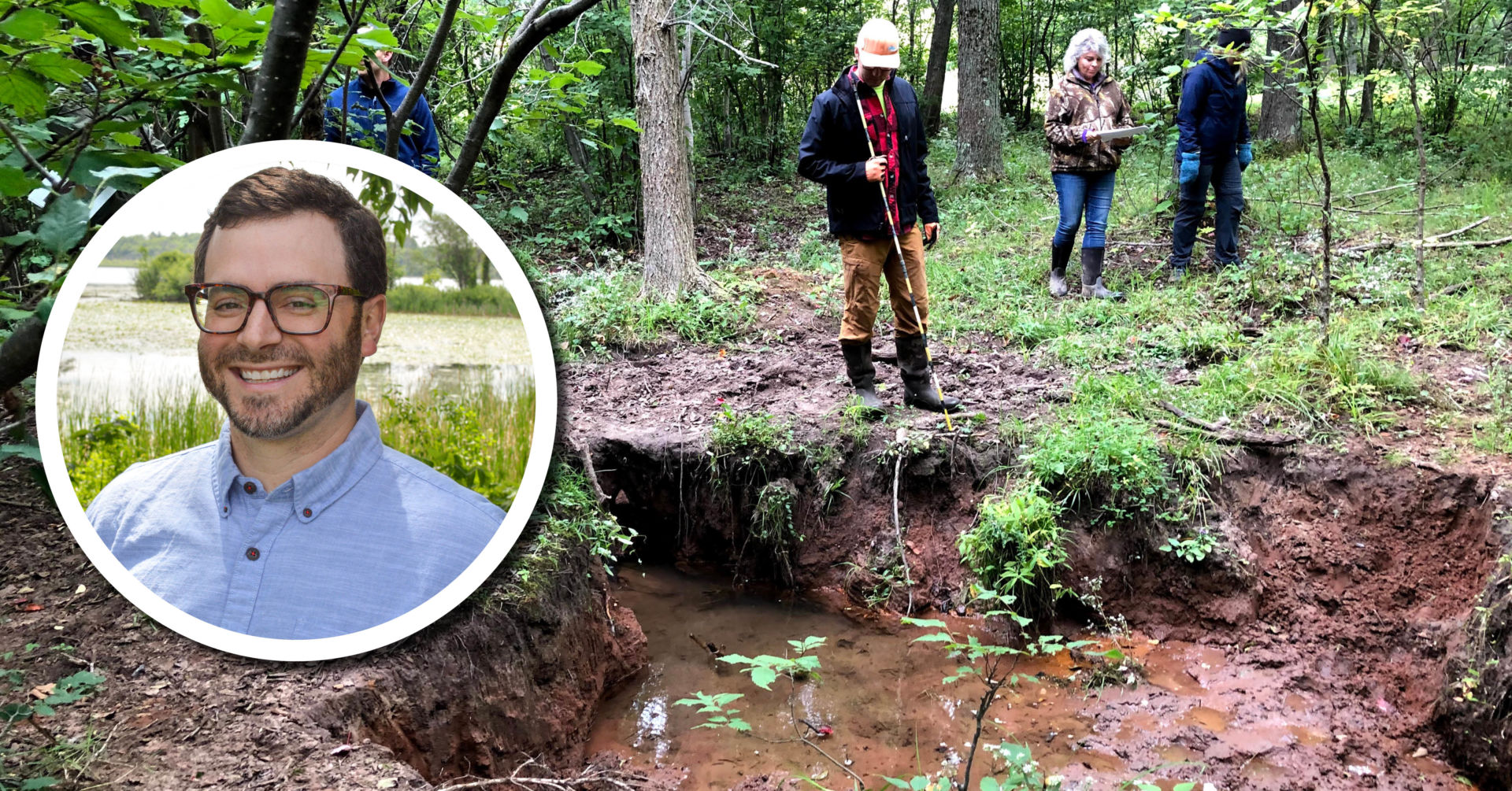This blog post describes one example of WWA’s place-based projects and partnerships that are key to our success protecting and restoring wetlands in Wisconsin.
A design charrette for the Marengo River watershed
So you’ve decided hydrologic restoration can help solve challenges in your watershed and want to get started. Unfortunately, it’s not as simple as just consulting a restoration handbook. The key to finding the right projects and practices is working with an interdisciplinary team. But how do you build the right team, and what does this team’s work look like in practice?
WWA recently experimented with a design charrette to tackle these questions as part of our natural flood management project work in Ashland County. The charrette approach—popular with planning and engineering firms—convenes diverse resource experts to exchange ideas and develop innovative and collaborative solutions to a specific design problem. We wanted a charrette that would emphasize cost-effective ways to address widespread flooding, erosion, and associated impacts. Earlier work had found that erosion-induced wetland drainage and floodplain disconnection contributes to flooding and water quality problems in the Marengo River watershed.
The charrette goals were to:
- Foster knowledge exchange between local resource managers and regional experts in fluvial geomorphology and hydrology.
- Demonstrate how an interdisciplinary approach can help identify the underlying drivers of flood hazards and degraded wetland and stream hydrology at any given site.
- Review and discuss the information needed to determine the appropriate use of techniques to meet restoration goals.
- Work through funding, budgeting, and evaluation considerations.
The charrette began with a virtual workshop in early September covering fundamental watershed hydrologic principles, geomorphic information specific to the Marengo watershed, and techniques commonly used to restore hydrology in various situations. The 27 participants included representatives from NRCS, USFWS, USGS, Bad River Tribal Natural Resources Department, WDNR, UW-EX, road and conservation departments from Ashland and Bayfield Counties, Northland College, and Inter-fluve Inc. Together, they brought diverse expertise in geomorphology, hydrology, agronomy, soil science, engineering, road maintenance, and fish and wildlife management to the charrette.
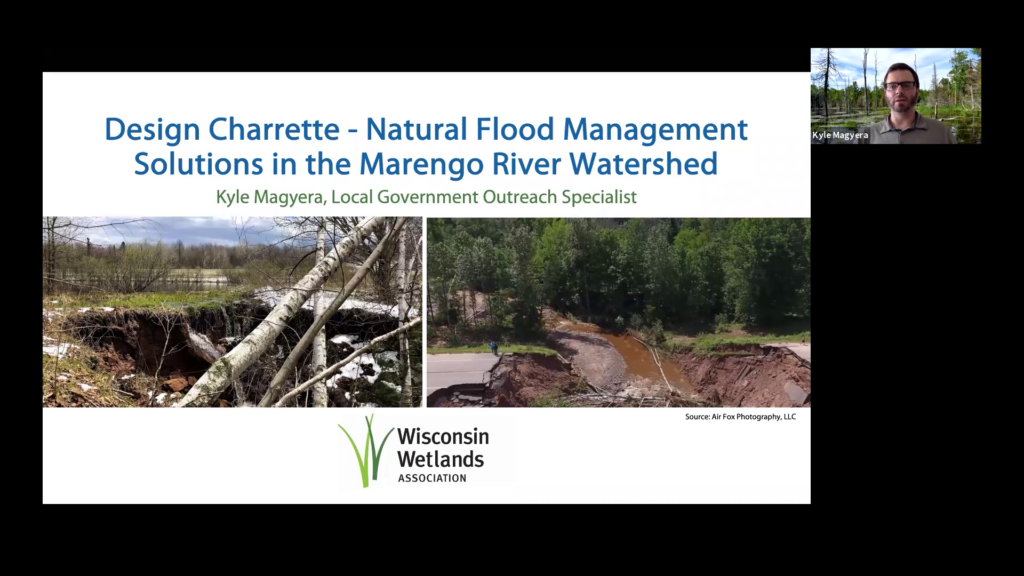
Before heading out into the field, attendees joined WWA and presenters from various fields online to learn the basics of hydrologic restoration.
After the virtual workshop, small cohorts from this group gathered for socially-distanced field visits to potential wetland restoration sites in Ashland County. These sites were on the shortlist of candidates for restoration under 2019 WI Act 157, a bill supported by WWA that provides funding for flood risk-reduction demonstration projects. The sites provided an applied hydrologic restoration planning experience for participants and laid the groundwork to bring them all back during and after construction for further learning.
We asked charrette participants to consider the historic context of the Marengo River watershed, current landscape conditions, and desired restoration outcomes. They examined a range of low-tech practices for restoring floodplain and wetland functions and discussed how to cost-effectively restore the hydrologic processes needed at both the site and reach scales.
The field discussions proved fruitful, with all participants contributing needed perspectives and suggested solutions. We expect the construction of Act 157 natural flood management demonstration sites to start in spring 2022.
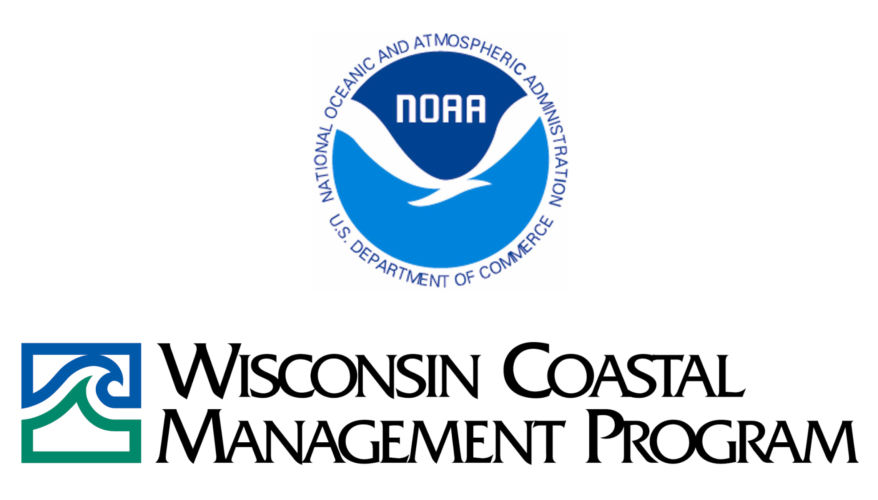
Related content
Developing a shared understanding of watershed-based hydrologic restoration
Laying the foundation for wetlands as effective solutions
Wetland Coffee Break: Piloting natural flood management in the Lake Superior basin

